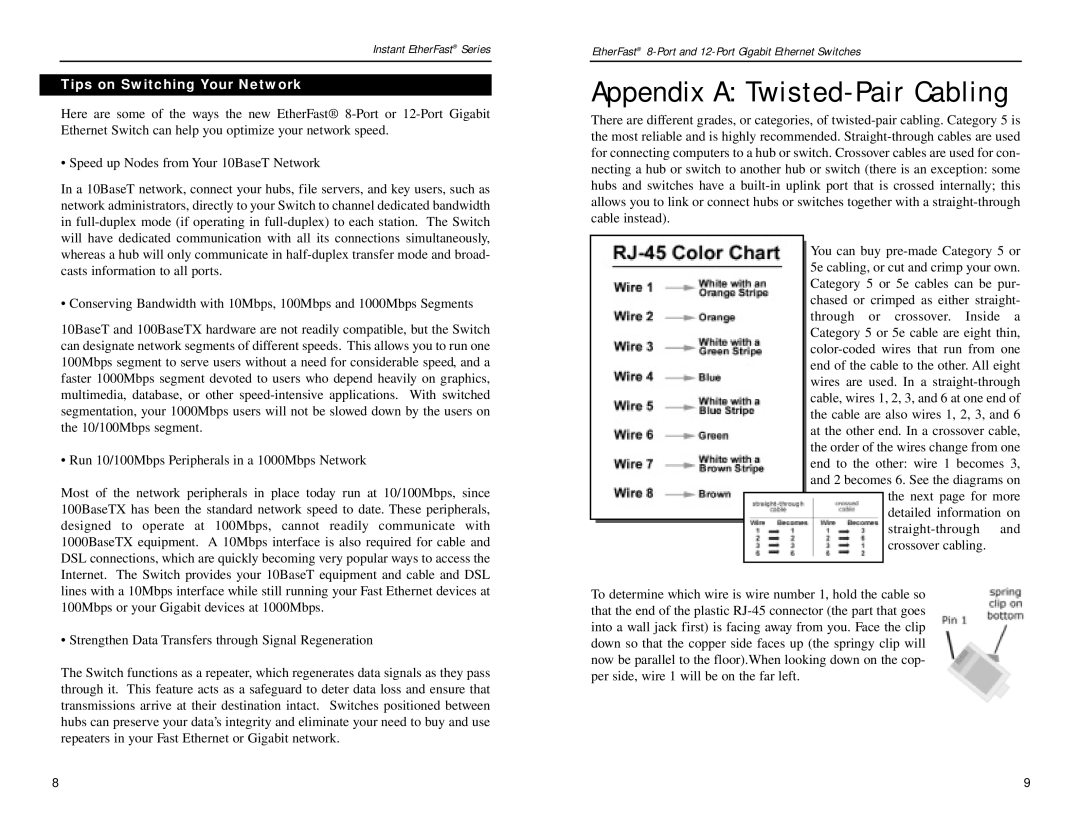
Instant EtherFast® Series
Tips on Switching Your Network
Tips on Switching Your Network
Here are some of the ways the new EtherFast®
• Speed up Nodes from Your 10BaseT Network
In a 10BaseT network, connect your hubs, file servers, and key users, such as network administrators, directly to your Switch to channel dedicated bandwidth in
• Conserving Bandwidth with 10Mbps, 100Mbps and 1000Mbps Segments
10BaseT and 100BaseTX hardware are not readily compatible, but the Switch can designate network segments of different speeds. This allows you to run one 100Mbps segment to serve users without a need for considerable speed, and a faster 1000Mbps segment devoted to users who depend heavily on graphics, multimedia, database, or other
• Run 10/100Mbps Peripherals in a 1000Mbps Network
Most of the network peripherals in place today run at 10/100Mbps, since 100BaseTX has been the standard network speed to date. These peripherals, designed to operate at 100Mbps, cannot readily communicate with 1000BaseTX equipment. A 10Mbps interface is also required for cable and DSL connections, which are quickly becoming very popular ways to access the Internet. The Switch provides your 10BaseT equipment and cable and DSL lines with a 10Mbps interface while still running your Fast Ethernet devices at 100Mbps or your Gigabit devices at 1000Mbps.
• Strengthen Data Transfers through Signal Regeneration
The Switch functions as a repeater, which regenerates data signals as they pass through it. This feature acts as a safeguard to deter data loss and ensure that transmissions arrive at their destination intact. Switches positioned between hubs can preserve your data’s integrity and eliminate your need to buy and use repeaters in your Fast Ethernet or Gigabit network.
EtherFast®
Appendix A: Twisted-Pair Cabling
There are different grades, or categories, of
You can buy
the next page for more detailed information on
To determine which wire is wire number 1, hold the cable so that the end of the plastic
8 | 9 |
